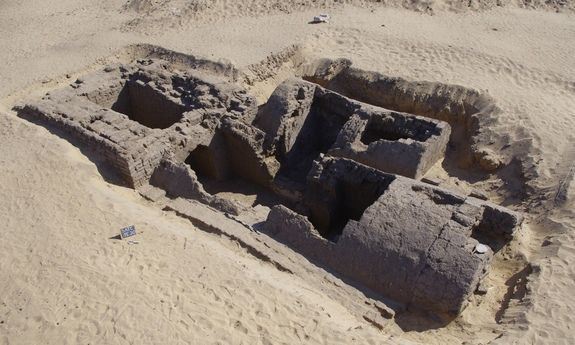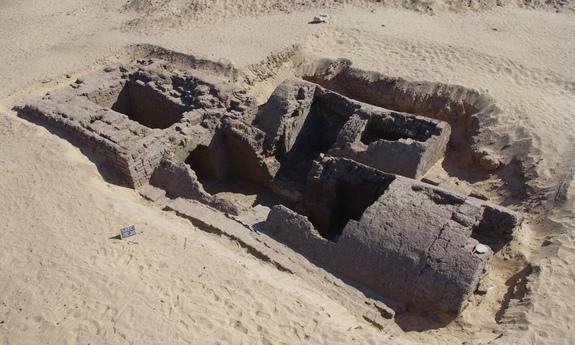2,500-Year-Old Tombs Uncovered Of Unknown Persons With Gold Tongues

The remains of two unknown persons with golden tongues were found inside tombs, dating back to the Saite Dynasty, in Egypt's Minya Governorate, the Ministry of Tourism and Antiquities in Cairo announced Sunday.
The discovery was made by a Spanish archaeological mission carried out by the University of Barcelona. Mostafa Waziri, the secretary-general of the Supreme Council of Antiquities, told the media two 2,500-year-old tombs were found, of which one had a limestone coffin with a cover in the shape of a woman. The remains of an unknown person were also discovered nearby.
Waziri noted the preliminary studies of one of the tombs showed it was previously opened in ancient times, the News Pakistan reported.
The second tomb, which was completely closed, was opened for the first time during the excavation. The mission also unearthed two coffins containing canopic pots, Hassan Amer, who oversees mission excavations, said according to WION.
"One of the pots contained 402 Ushabti figurines made of faience, a set of small amulets and green beads," he further said.
Excavations will continue to uncover more secrets inside these tombs as students begin their study about the golden tongues. The mission has been working in the El-Bahnasa area since 1992, led by Maite Mascort and Esther Pons Melado. Over these years several artefacts were found from the Saite, Greco-Roman and Coptic eras. El-Bahnasa is renowned for its Papyri with writings in Greek language.
Last month in Peru, a team of experts found a mummy estimated to be at least 800 years old. Van Dalen Luna, from the State University of San Marcos, told local media at the time the mummified remains were of a person from the culture that developed between the coast and mountains of the South American country. The mummy was found inside an underground structure that was on the outskirts of the city of Lima. "The main characteristic of the mummy is that the whole body was tied up by ropes and with the hands covering the face, which would be part of the local funeral pattern," Luna reportedly said.

Photo: Kevin Cahail





















